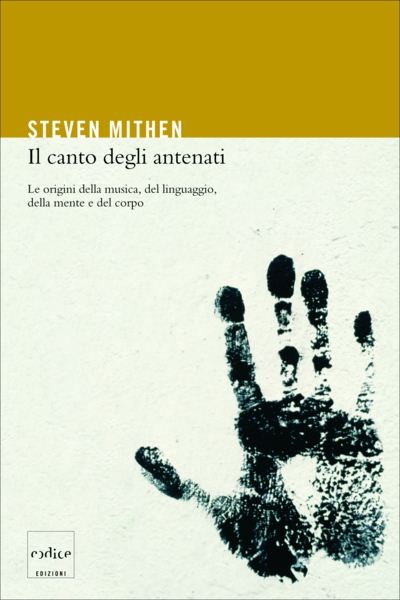Dopo la discussione, peraltro molto interessante e per me, fruttuosa, sulla paternità delle opere di Scelsi, ho cercato un po’ per vedere se potessero esistere altri casi paragonabili.
Quando ho cominciato pensavo che in musica non esistessero molte situazioni del genere, almeno in tempi recenti (nell’antichità chissà cosa può essere successo), a meno di non scendere nel campo della musica di consumo nel senso stretto del termine dove è risaputo che gli individui che si presentano in pubblico suonano sempre in playback e sono solo dei front-men perché in realtà gli esecutori sono altri (tipicamente dei session men).
Nella musica classica, a mio ricordo, c’erano solo due casi di una certa importanza, ma entrambi riguardavano esecutori, non compositori, ed entrambi erano delle frodi consapevoli (mi riferisco al caso Joyce Hatto e a quello Schwarzkopf – Flagstad, con alcune note sostituite in una incisione). Invece è bastato cercare un po’ per trovarne parecchi:
Henri Casadesus (1879 – 1947) era violista ed editore musicale, fratello di Marius che a sua volta era lo zio del famoso pianista Robert Casadesus e prozio di Jean Casadesus. Egli fondò la Société des Instruments Anciens con Camille Saint-Saëns nel 1901. La società, che operò tra il 1901 ed il 1939, fu un quintetto di esecutori che suonavano strumenti antichi come la viola da gamba o la viola d’amore.
Il quintetto di dedicò alla riscoperta di opere di musicisti del passato non più eseguite da secoli. Si scoprì poi, che diversi pezzi attribuiti a famosi musicisti del passato, erano invece delle loro composizioni. L’Adélaïde Concerto, da loro attribuito a Wolfgang Amadeus Mozart, era stato scritto da Marius Casadesus.
Sembra invece che Henri fosse il compositore del “Concerto in re maggiore per Viola” attribuito a Carl Philipp Emmanuel Bach, descritto da Rachel W. Wade nell’appendice B del suo Keyboard Concertos of Carl Philipp Emmanuel Bach. Questo concerto apparve nel 1911 in una edizione russa, presumibilmente “trascritta…per piccola orchestra da Maximilian Steinberg,” e venne poi eseguita da direttori come Darius Milhaud e Serge Koussevitsky, e registata da Felix Prohaska e Eugene Ormandy. Nel 1981, Wade scrisse: “al giorno d’oggi, il più eseguito concerto di C.P.E. Bach non è stato scritto la lui.”
Henri è anche accreditato di un concerto di Handel e di un concerto di J.C. Bach, entrambi per viola. Questi ultimi vengono oggi adoperati nell’insegnamento del metodo suzuki per la viola, e vengono detti “The Handel/Casadesus Concerto” e “The J.C. Bach/Casadesus Concerto”.
Si passa, poi a Gaspar Cassadò (1897 – 1966), violoncellista e compositore spagnolo, ricordato perché alcune parti del suo Concerto per violoncello in RE min. e della Suite per Cello solo erano in realtà trascrizioni o rielaborazioni di brani altrui (Ravel, Kodaly), ma questo è un peccato veniale. Cassadò ha scritto molte trascrizioni e variazioni su opere altrui in modo non fraudolento. Tuttavia si è attribuito anche molti brani scritti alla maniera di… che forse lo sono un po’ troppo.
François-Joseph Fétis (1784 – 1871) è stato un musicologo, compositore e docente belga. Autore di parecchi “scherzi” (non nel senso della forma musicale), scrisse un concerto per liuto, peraltro eseguito anche da Sor, attribuendolo a Valentin Strobel.
Ma quello che ha fatto il colpo più grosso è senz’altro il musicologo italiano Remo Giazotto (1910 – 1998) che fu un famoso esperto di Albinoni, al punto tale da scrivere e attribuirgli il celeberrimo Adagio in SOL minore, noto, appunto, come Adagio di Albinoni.
Giazotto dichiarò di essersi limitato a “ricostruire” l’Adagio sulla base di una serie di frammenti di Tomaso Albinoni che sarebbero stati ritrovati tra le macerie della biblioteca di Stato di Dresda – l’unica biblioteca a possedere partiture autografe albinoniane – in seguito al bombardamento della città avvenuto durante la seconda guerra mondiale. I frammenti sarebbero stati parte di un movimento lento di sonata (o di concerto) in sol minore per archi e organo.
In verità, a partire dal 1998, anno della morte di Remo Giazotto, l’Adagio è emerso essere una composizione interamente originale di quest’ultimo, giacché nessun frammento o registrazione è stato mai trovato in possesso della Biblioteca Nazionale Sassone.
Secondo wikipedia, Giazotto è fortemente contestato dagli odierni studiosi di musica barocca, perché più volte accusato di aver prodotto dei veri e propri falsi, specie in ambito vivaldiano.



 Il libro di
Il libro di  ), uno di amusia cocleare (deviazione nella percezione dell’altezza dei suoni che affligge un compositore: idem) e il sorprendente capitolo dedicato a un medico che, dopo essere stato colpito da un fulmine, sviluppa un insaziabile desiderio di ascoltare musica per pianoforte, suonare e perfino comporre, si passano ore piacevoli a riflettere sulla complessità di quel sistema percettivo il cui funzionamento è in massima parte determinato dalla comunicazione bilaterale orecchie -> cervello che alla fine dà vita al fenomeno musicale.
), uno di amusia cocleare (deviazione nella percezione dell’altezza dei suoni che affligge un compositore: idem) e il sorprendente capitolo dedicato a un medico che, dopo essere stato colpito da un fulmine, sviluppa un insaziabile desiderio di ascoltare musica per pianoforte, suonare e perfino comporre, si passano ore piacevoli a riflettere sulla complessità di quel sistema percettivo il cui funzionamento è in massima parte determinato dalla comunicazione bilaterale orecchie -> cervello che alla fine dà vita al fenomeno musicale.
